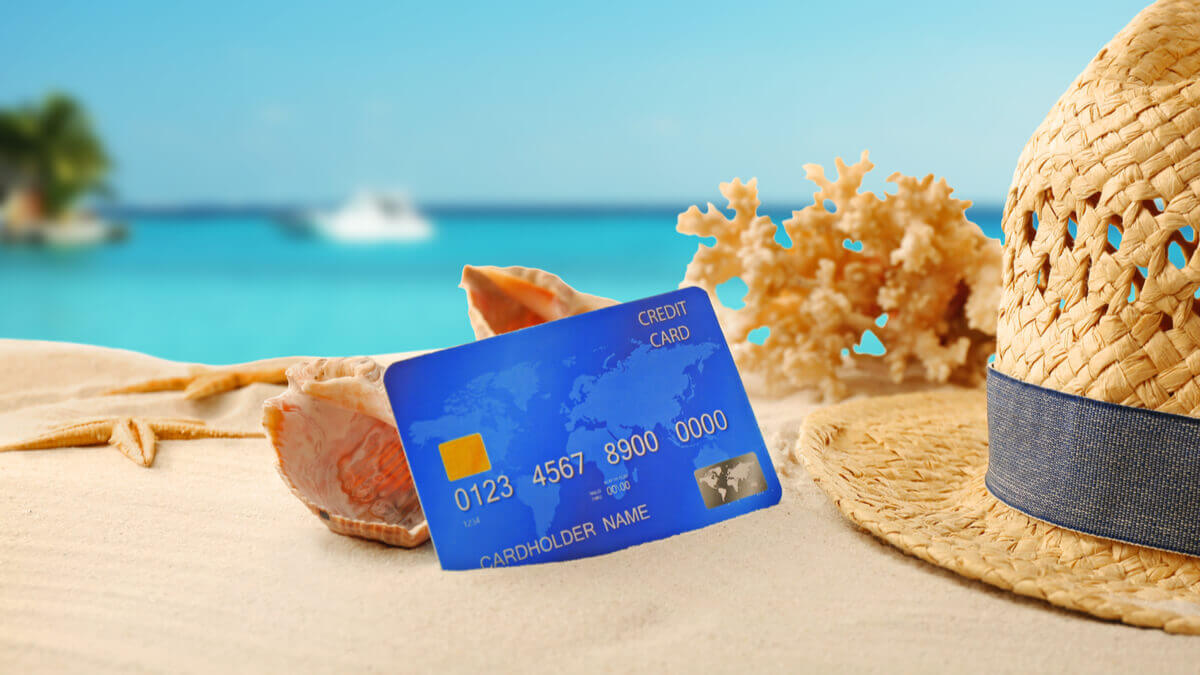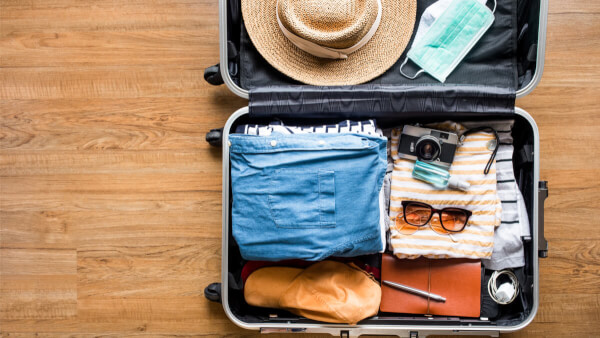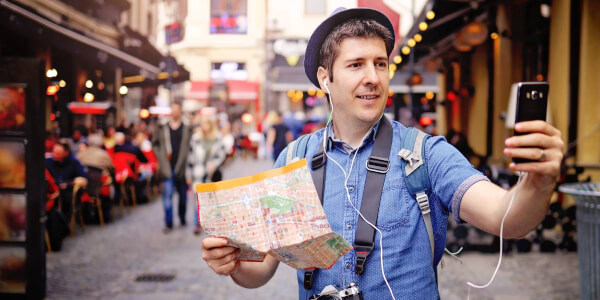UBank vs Wise card - Which is the better travel card to use overseas in Australia?
Looking for a travel card to use overseas? We compared the fees, features, and benefits of two top travel cards: Ubank vs Wise, for Australian travellers.

A travel money card is a prepaid card that lets you load multiple currencies onto it for spending during your overseas adventures. It’s designed to help you manage spending abroad, with options to lock in exchange rates and avoid foreign transaction fees.
In this guide we’re going to focus largely on what ANZ offers to travellers, as well as a few popular alternatives like Wise.
| Table of contents |
|---|
Previously ANZ offered a dedicated travel card known as the ANZ Travel Card, which allowed customers to hold a stored balance in supported currencies.¹ The card was discontinued in 2020, with all customer accounts being fully closed by the end of 2022.
In this guide we’re going to look at some alternatives for the ANZ Travel Card in Australia, starting with popular ANZ cards that are still available and are handy for travel. We’ll then touch on some alternative providers including Wise, that may be suitable for frequent travellers or people looking for flexible travel money solutions.
✈️ Don't leave without the right card. Find the best travel card for overseas and spend smarter during your trip.
ANZ has certain debit cards and credit cards that may be suitable for your overseas travel needs.
The ANZ Access Visa Debit card is linked to an eligible ANZ bank account which can be opened online, through the ANZ app or at a branch.⁴
- Works wherever Visa is accepted
- Compatible with digital wallets and contactless payments
- Pay with your money, rather than putting it on credit
- Track spending online and through the ANZ app
It’s best for people who want an Australian transaction account with a debit card that can be used at home and for infrequent trips abroad.
The ANZ Plus Visa Debit card is part of ANZ’s digital banking service, linked to an ANZ Plus account that can only be opened and accessed through the ANZ Plus app.⁴
- Works anywhere Visa is accepted
- Compatible with digital wallets
- Shop with your own money, rather than credit
- Around the clock security with ANZ Falcon
It’s a viable option for people looking for an online only Australian account that links to a debit card that can be used at home and works overseas.
With an ANZ Frequent Flyer Black credit card you can enjoy the highest Qantas Points earn rate they offer.⁵ It comes with a 20.99% interest rate p.a. on purchases and a $15,000 minimum credit limit.
- Complimentary Qantas Frequent Flyer membership if not already a member
- New card bonus offers of tens of thousands of Qantas Points
- Earn 1 Qantas Point for every $1 spend up to $7500
- Above $7500 earn 0.5 Qantas Points for every $1 spent
- Complimentary travel insurance for eligible trips
- 24/7 domestic and international personal concierge services
- Earn cash back plus Qantas Points on 2000+ retailers when shopping through Cashrewards
- Qantas club lounge benefits
This credit card would be suitable for frequent travellers who want to earn lots of Qantas Points and don’t mind using a credit card for daily spending.
For a slightly cheaper credit card that still allows Qantas Points to be earned there’s the ANZ Frequent Flyer Platinum credit card.⁶ It has an interest rate of 20.99% p.a. on purchases and a $6,000 minimum credit limit.
- Complimentary Qantas Frequent Flyer membership for non-members
- Bonus new credit card offers for tens of thousands of Qantas Points
- Earn 0.75 Qantas Point for every $1 spend up to $3000
- Above $3000 earn 0.5 Qantas Points for every $1 spent
- Complimentary travel insurance for eligible trips
- 24/7 personal concierge services with domestic and international help
- Earn cash back and Qantas Points with 2000+ retailers through Cashrewards
The card would be suitable for travellers looking for a more affordable option than the Frequent Flyer Black card to earn Qantas Points on their credit card purchases.
The ANZ Rewards Black credit card gives holders the opportunity to earn ANZ Reward Points, with the highest points rate of all their credit cards.⁷ The interest rate is 20.99% p.a. on purchases and there’s a $15,000 minimum credit limit.
- New card bonus offers of cash back and ANZ Reward Points
- Earn 2 ANZ Reward Points For every $1 spend up to $5000
- Above $5000 earn 1 ANZ Reward Point for every $1 spent
- Complimentary travel insurance for eligible trips
- 24/7 domestic and international personal concierge services
- ANZ Reward Points can be redeemed for Airpoint Dollars or airline points with partner airlines
The ANZ Rewards Black credit card is best for customers looking to receive larger amounts of points for their credit card spending that can be redeemed for travel as well as non-travel retailers like JB Hi-Fi and Bunnings.
If you’re considering an ANZ card for overseas spending, here’s a few things to keep in mind.
- Some cards come with ongoing fees that might not be worth it unless you travel regularly
- A poor exchange rate can make a big difference so look for cards that offer competitive rates, ideally the mid-market rate
- Foreign transaction fees can add up when spending overseas or in a currency other than AUD
- While these ANZ cards don’t have one, some cards apply a currency conversion fee when funds are converted from one currency to another
- ATM withdrawal fees can be applied as a percentage or a fixed rate fee, so check this and plan the frequency and amount of your withdrawals around it
- Some ANZ credit cards offer frequent flyer points and other rewards which can prove to be valuable if you travel frequently
The fees for having each card and the associated accounts varies, with some being more expensive to maintain than others.
| Card | Foreign Transaction Fee | Currency Exchange Fee | Overseas ATM Withdrawal Fee | Account Maintenance Fees |
|---|---|---|---|---|
| ANZ Access Visa Debit card³ | 3% overseas transaction fee | No fee | $5 per transaction | $5 per month unless fee exemptions apply |
| ANZ Plus Visa Debit card³ | 3% overseas transaction fee | No fee | $5 per transaction | No fee |
| ANZ Frequent Flyer Black credit card² | 3.5% overseas transaction fee | No fee | 3% cash advance fee with a minimum of $3 and maximum of $20 | $370 annual fee + $55 rewards program fee |
| ANZ Frequent Flyer Platinum credit card² | 3.5% overseas transaction fee | No fee | 3% cash advance fee with a minimum of $3 and maximum of $20 | $240 annual fee + $55 rewards program fee |
| ANZ Rewards Black credit card² | 3.5% overseas transaction fee | No fee | 3% cash advance fee with a minimum of $3 and maximum of $20 | $320 annual fee + $55 rewards program fee |
For the ANZ Access Visa Debit card and ANZ Plus Visa Debit card the amount will be converted to NZD using the Visa rate, then debited from your account.⁸ The same process applies to the ANZ credit cards, including the ANZ Frequent Flyer Black credit card, ANZ Frequent Flyer Platinum credit card and ANZ Rewards Black credit card.⁹
You can check the Visa rate on the Visa Australia website, keeping in mind that ANZ doesn’t specify whether or not their conversion includes a margin.
By comparison, some providers like Wise offer the mid-market rate. Considered the fairest rate to determine the exchange rate, the mid-market rate is the midpoint between the buy and sell prices on the currency exchange market.
If you decide you want to take your ANZ card for travel, here's some tips to keep in mind.
- Notify ANZ of your travel plans so they’re aware that you’ll be abroad
- Make sure your daily withdrawal and payment limits are high enough for what you plan to spend on things like accommodation, tours or a rental car
- If you get the option to spend in the local currency or home currency, choose the local currency to avoid the expenses of a dynamic currency conversion
- Check your transaction history frequently, just to make sure there aren’t any fraudulent transactions
- Carry a backup card from a different provider, just in case something happens to your main card
Aside from what ANZ offers, there are some providers that specialise in multi currency travel cards. If you’re after a dedicated travel card there are a few available with three popular choices being Wise, Revolut and Travel Money Oz.
A global fintech company trusted by millions of customers around the world, Wise offers a multi currency debit card that makes spending overseas simple, transparent and affordable. It comes attached to a Wise Account, which allows you to hold over 40+ currencies. You can convert between them at the mid-market rate with a low currency exchange fee.
- Spend in 150+ countries
- Access your account online or through the Wise app
- Physical and virtual cards
- Compatible with digital wallets
| Pros | Cons |
|---|---|
|
|
Revolut is a financial services provider that offers debit cards alongside their multi currency account. What you get access to through the account does vary depending on which plan you choose, with the options being Standard, Premium or Metal.¹⁰
- Airport lounge access for purchase or discounted depending on the plan
- Discounts on international transfer fees for Premium and Metal account holders
- Physical and virtual cards¹¹
- Can be used almost anywhere Visa or Mastercard are accepted
| Pros | Cons |
|---|---|
|
|
Part of the Flight Centre Travel Group, Travel Money Oz offer the Currency Pass prepaid travel money card.¹² It’s powered by Mastercard so is accepted anywhere in the world that Mastercard is.
- Load up to 10 currencies onto the card
- Can still spend currencies that aren’t supported for loading
- Lock in the exchange rate the day you load your currency
- Compatible with certain digital wallets
| Pros | Cons |
|---|---|
|
|
🌎 Enjoy low, transparent fees with the world's most international debit card and save on foreign transaction fees 🌎
Sources:
Sources last checked on date: 12 April 2025
*Please see terms of use and product availability for your region or visit Wise fees and pricing for the most up to date pricing and fee information.
This publication is provided for general information purposes and does not constitute legal, tax or other professional advice from Wise Payments Limited or its subsidiaries and its affiliates, and it is not intended as a substitute for obtaining advice from a financial advisor or any other professional.
We make no representations, warranties or guarantees, whether expressed or implied, that the content in the publication is accurate, complete or up to date.

Looking for a travel card to use overseas? We compared the fees, features, and benefits of two top travel cards: Ubank vs Wise, for Australian travellers.

The most cost-effective ways to get foreign currency. Compare banks, exchange services, and ATMs with tips to avoid hidden fees and get the best exchange rates.

Planning to use your UBank card to make ATM withdrawals internationally? Read on to understand the true cost of overseas transactions with UBank.

Wondering if Travel Money Oz is the right solution for you? Our guide outlines everything you need to know about their currency exchange and travel money cards.

If you're trying to decide between Travelex and Travel Money Oz for your international money needs, read on for our side-by-side comparison of the features.

Side-by-side Comparison of Westpac Travel Card vs Wise Travel to help Australian users decided which is a better travel card for spending abroad.